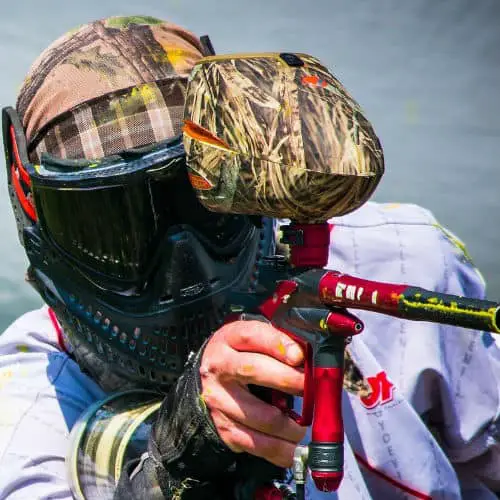
Standard paintball gear consists of a hooded jersey with a built-in chest protector, paintball pants with a wide knee pad area, and a paintball mask with fog-resistant lens. However, some people prefer to wear headbands as a second layer of protection. But why do paintball players wear headbands if they already have paintball masks?
Veteran paintball players wear headbands to protect themselves from direct head shots. Paintball headbands with padding absorb much of the impact and help with sweat management. Wearing a headband can also secure your paintball mask in place by placing the straps above the headband knot at the back of your head.
Paintball pellets are usually capped at 280 fps, but even at that velocity, they pack enough of a punch to leave nasty bruises. Indeed, it’s not unheard of for some players to go into shock once they are hit by a fast paintball.
The most important trait of a good paintball headband is the fit. It must fit comfortably and properly to protect your head against possible injuries. A simple way to measure your head is to use a cloth tape measure (you can use a string if you don’t have a cloth tape measure) to find the circumference of your head. Make sure to measure just above the brow line for accurate results.
A properly-fitted headband should have no gaps anywhere, and it should fit around your head. Once the headband is seated on your forehead, press on it from front to back. The headband should fit snugly so that when you push on it, the skin on your forehead moves with it. Try moving your head around in rapid motion to check if your headband moves with it.
If the headband flops around too much or falls loose, it is too large for your forehead. If it does not sit flush against your forehead, it is too small. Wearing a headband that is too big or small doesn’t serve any purpose, and it will restrict your movement.
Place the center of the headband against your forehead. Pick up the headband by its ends and center your forehead against the middle of the headband. Make sure to place the headband underneath your hair so that it doesn’t get trapped between your headband and forehead.
Next, you would want to wrap the two ends of the headband around the back of your head. To do this, simply bring the two ends of the headband above your ears, behind your head. Make sure the headband does not fold when you are wrapping it. Otherwise, the strip won’t stay flush against your head and may come off during excessive movement.
If your headband comes built-in with a mesh wrap, simply tie the headband as you normally would, but make sure to pull the mesh wrap down for a more snug fit with clean lines. You can do this by tugging at the sides to make it as flat as possible along your head. If the mesh looks fluffy and sticks out too much, it’s no longer a tight fit.
Before heading out to the field, make sure to smoothen out any extra wrinkles appearing over the headband’s strip so it doesn’t fall off during gameplay.
1) Put the headband on first and then cover it with a beanie made with terry cloth to absorb sweat.
2) This is a reversal of the first configuration, with the beanie as the first layer followed by the headband as the second layer.
3) Wear a mesh wrap as the first layer followed by the headband as the second layer. The mesh wrap provides an extra layer of protection to your head. It won’t get nearly as hot as a beanie because the mesh provides more breathing space for your skin and allows sweat to evaporate more quickly.
4) Wear a padded skullcap followed by a headband. Skull caps are lightweight and provide more protection than mesh wraps.
5) Wear a headband as the first layer followed by a padded baseball cap as the second layer. This provides more protection than a padded skullcap would.
6) Wear two headbands, one over the other if you need some extra layer of protection. A third headband is overkill.
If you value aesthetics above all else, make sure to look up the different types of headbands for customization. Paintball is a game where you want to look as cool and slick as possible while being completely safe from incoming paintballs. Below are eight different types of headbands you can use.
Tennis headbands are good at absorbing moisture from the forehead and prevent sweat from trickling down to the eyes. They have an exceptionally tight fit that prevents any loose or stray hair from hindering one’s vision during gameplay. Tennis headbands are unusually made from absorbent materials such as nylon with terry cloth.
Paintball games involve some serious movement, which means you will often find yourself jumping, rolling, and crawling in tight places. The last thing you want is for the headband to come falling off or for wayward hair strands distracting you from the task at hands. Yoga headbands are made from breathable, stretchy materials to help with both sweat and hair management. You can easily perform diverse movement and still stay neat and presentable.
If it’s getting particularly cold out on the paintball field, you may want to use knitted headbands to keep your head and ears warm without the need for earmuffs or a hat, both of which may come off during rapid movement.
In addition, knitted headbands can provide stronger grip to paintball accessories such as your paintball mask and prevent it from slipping. Knitted headbands have various designs that include colorful stripes and solid colors. You can use them as an accessory to coordinate with the rest of your paintball outfit.
Bandanas are often worn as headbands because of their similar appearances. Bananas feature square sections of colored fabric and can be worn in multiple ways. People commonly wear it around their neck or head. Some paintball players put on a bandana by folding it and tying two of the corners together. For the most part, bandanas are used for fashion purposes but they may provide some moisture absorbing properties.
You will be running a lot in a typical game of paintball and if you have long hair, it is bound to get in your way. A running headband is designed specifically to keep hair in one spot. Most running headbands have good moisture wicking properties so sweat won’t be a hindrance.
Gym headbands are lighter and thinner headbands primarily used for better sweat control. Sweat dripping is an on-going problem in high intensity sports like kick boxing, martial arts, and even paintball, which is why gym headbands are a common accessory worn by professionals.
For the most part, gym headbands are viewed as out of style and unfashionable because of their relatively bland aesthetics, but at least they get the job done.
Thin headbands, as the name suggests, are incredibly thin strips that probably won’t provide enough cushioning to absorb the impact of incoming paintball pellets. Nor do they have any moisture wicking properties for sweat control. They are used purely as a stylistic choice.
Ribbed headbands have ridges instead of a smooth texture finish you see on traditional headbands. If you’re not wearing full sleeved jerseys and your arms are getting sweaty, you can wipe off your palms and hands on the headband for extra convenience.
The most popular materials for headbands include micro fleece, wool, and even faux fur if you really want to make a fashion statement.
Micro fleece is a soft, synthetic material usually made from polyester. Micro fleece hats feel a lot like wool and offer lots of warmth. They are easier to wash than wool and feel softer to the touch. There are different classes of micro fleeces available, with heavier materials being the warmest.
Fleece is naturally good at resisting moisture and water buildup, making it excellent for use in headbands to wick sweat while allowing the skin on the forehead to breathe.
Most headbands are made of woven or knitted material for extra endurance and durable. They can easily stretch up to 30 percent when dry and 50 percent when wet. Wool is naturally good at resisting moisture and absorbs all the sweat into the core of the fiber so it doesn’t feel as soggy or wet to the wearer. This means your forehead will stay dry and warm even if it rains.
Acrylic hats are an excellent substitute for wool and other blends due to being exceptionally soft. They are mostly used by people who love wool but may have allergic reactions to the fabric. Acrylic headbands have the same properties as wool headbands, in that, they are soft, warm, and have good moisture wicking properties.
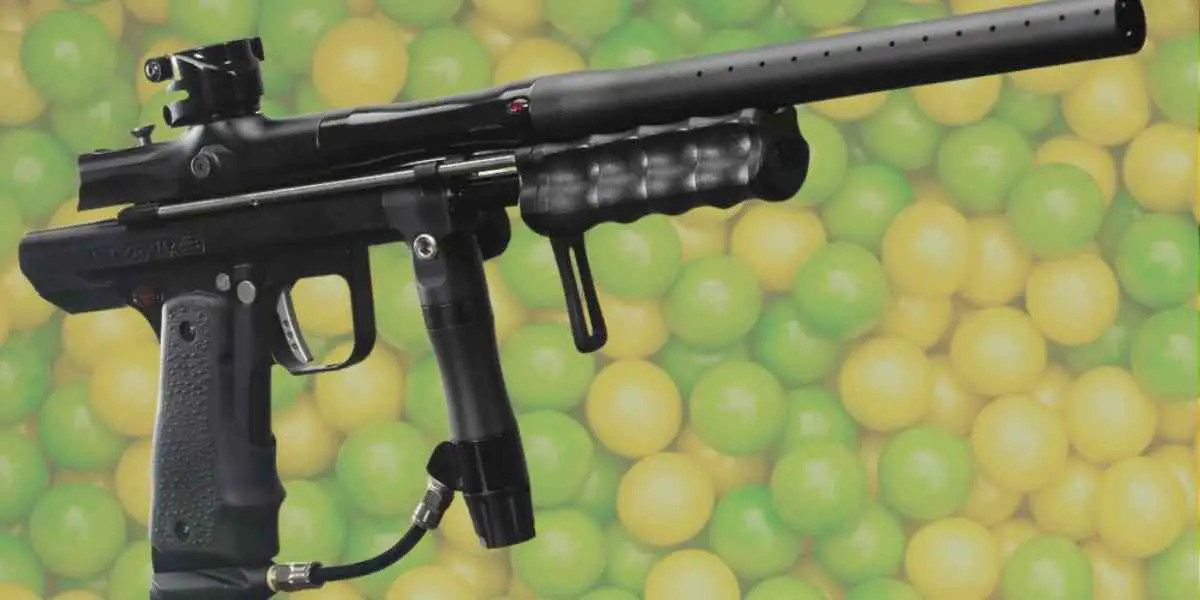 Empire Paintball Sniper Pump Marker Review
Empire Paintball Sniper Pump Marker Review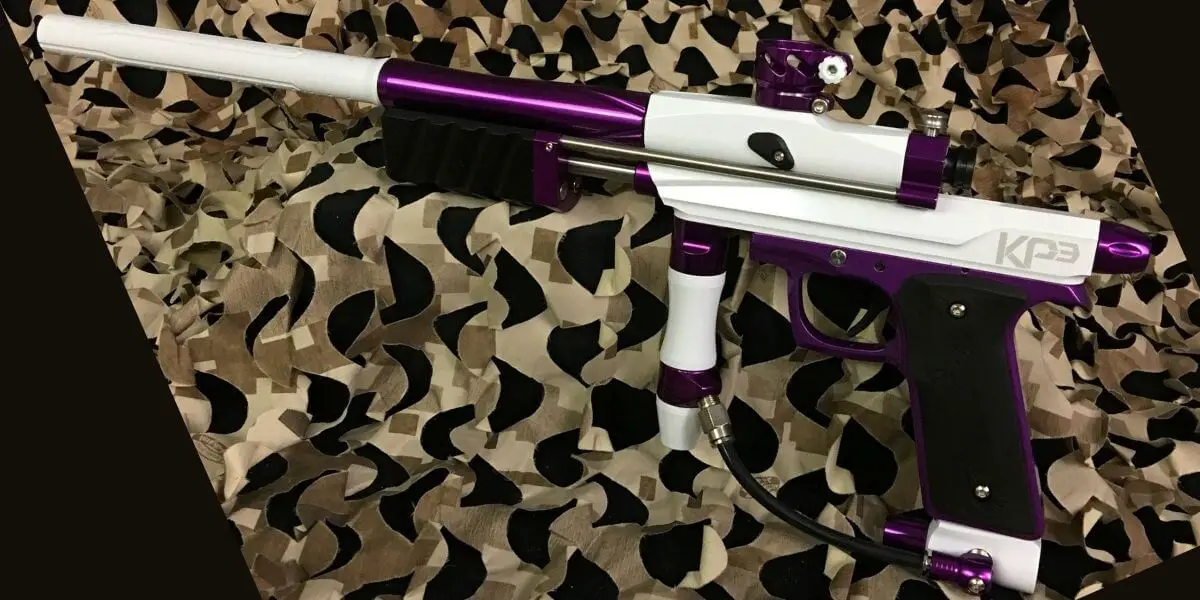 Azodin KP3.5 KAOS Review
Azodin KP3.5 KAOS Review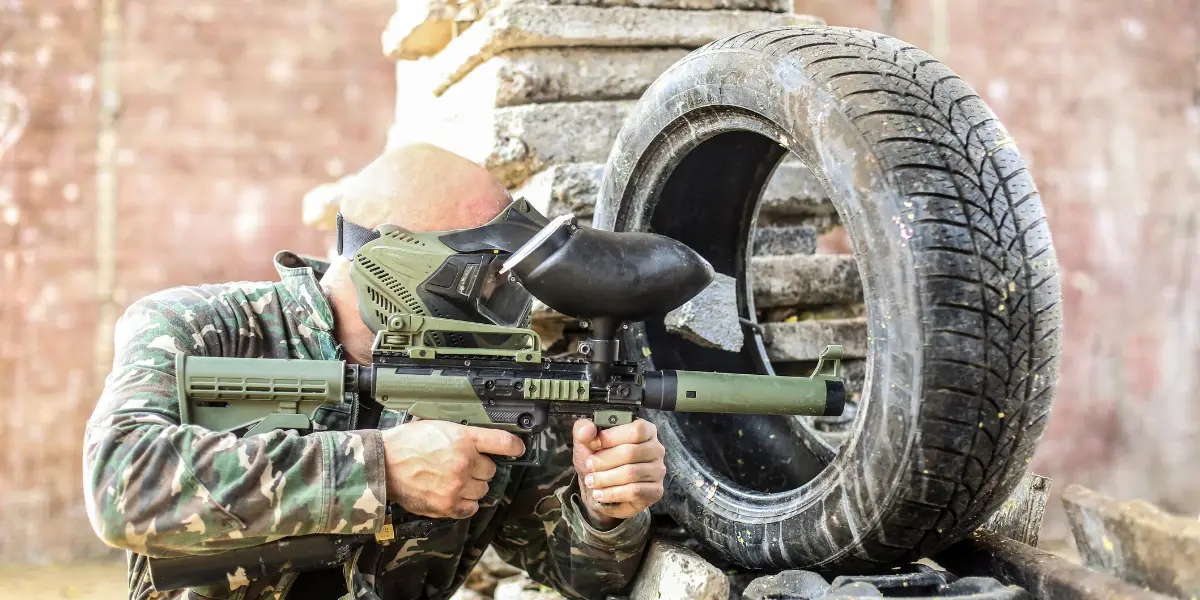 Tippmann Cronus Review
Tippmann Cronus Review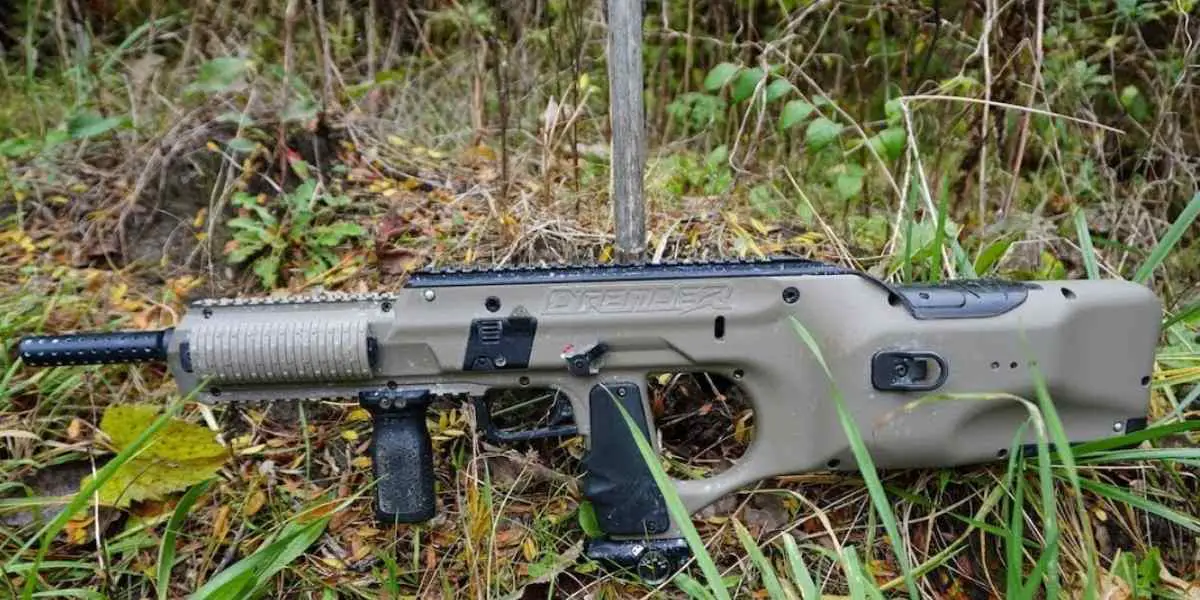 Empire BT DFender Review
Empire BT DFender Review